
DMM are responsible for some of my favourite ice axes, from the Apex, tool of choice on routes I find hard, to the Spire Tech, a no-nonsense model for one-axe winter walking and mountaineering days that I reviewed (and rated highly) last year:
Here's another to add to the collection - and while it's early days, I'm already a big fan. New to the lineup this season is the Vertex, an axe that fits neatly between the aggressive mid-to-high grade Apex and the toned-down walking-to-mountaineering Spire Tech. Occupying a distinct and very useful intermediate niche, this is the lightest Type 2 technical axe that DMM have ever made, their answer to the likes of the Petzl Sum'tec or Black Diamond's Venom.
Its slightly downturned pick and moderately curved shaft give the Vertex just the right geometry for lower grade winter climbing, but without so much curve that handling and performance are compromised when merely walking. Light enough for long days on the hills or weight-conscious alpine climbing, yet still sufficiently sturdy for ice and mixed climbing (within reason), or building into a belay, and with a modular head and a removable sliding grip rest, this is a versatile and effective all-rounder.
Who and what is it aimed at?
With their radical geometry and moulded handles, more technical axes aren't best suited to walking terrain, winter ridge scrambles, or easy snow and ice climbs. They're not great when you want to plunge the shaft into snow, and harder to employ in an axe arrest too. On the other hand, more relaxed walker-friendly models like the Spire Tech, while often good on some of the above, have pretty obvious limitations for climbing. Bring on the Vertex and you've one axe (well, you'll want a pair) that'll take you comfortably from walking onto graded winter climbing, be that ice, snow, or rocky mixed.
I recently used my review pair for a mountaineering day on Ben Nevis. Here they fared equally well doing a bit of everything - walking up and down neve slopes, climbing hard-frozen snow and wee bits of ice in No2 Gully (grade II), and scrattling along the CMD Arete on spring-like snow-and-boulders. I felt I had at least a grade in hand, and on the strength of that would happily climb grade III with them. No doubt more able climbers could take that further - after all, plenty of folk used to climb respectably back in the day on less ergonomic and more cumbersome setups than this. Nevertheless, without the more technical lines and all-out strength of the likes of the Switch or the Apex, the Vertex is not a Scottish mixed climbing battleaxe. It obviously has limits.
Weight
Weighing just 445g apiece for the full set-up in 50cm length, the Vertex really is light for a technical tool, coming in lighter than two of its most obvious competitors, the Petzl Sum'tec and the BD Venom. Remove the trigger and it's a minimalist 418g per axe - good perhaps if you're on a walking or skiing day and don't anticipate doing any steeper climbing, though not a weight-saving compromise I'd make for mountaineering. I can imagine this tool being spot on for expedition climbing, but I've been enjoying it somewhat closer to home and sea level.
How does it feel in the hand?
Two lengths are available - 50cm and 55cm. Though a bit above average height, I've been happily using the shorter version. The same length as my other technical axes, this is more agile for swinging when climbing, but still long enough I've found when using the axe in walking (piolet canne) mode once the angle begins to steepen.
The moderately curved shaft gives it a nice natural swing, offers good holding power on steeper ground, and allows some clearance over bulges. If you're used to ice climbing with a more technical tool then you may end up banging your knuckles a bit, though the trigger affords some protection. In piolet canne mode it's comfy in the hand (the adze gives you a little more to hold than the hammer), and the shape of the shaft is perfect for plunging into snow. It feels great for daggering too.
While I love climbing with the DMM Apex, no one could call it a lightweight at around 680g per axe. But the Vertex is another thing altogether. Whether strapped to the pack or held in your hand, its lightness is a massive advantage on mountaineering days. But when it comes to climbing on ice I do find that you have to swing that bit harder to get a good stick, since there just isn't the mass in the head. For a pure ice climb the Vertex is perhaps a bit weedy; it clearly excels more when you're doing a bit of this and a bit of that.
Rating and construction
With a simple tubular aluminium shaft, a double-riveted head (watch out for head wobbles on single-riveted models!), and decent chunky picks, the Vertex feels reassuringly solid for its weight.
Both the pick and shaft are certified as Type 2, according to the new classification that replaces Types B and T.
"This means [the Vertex] meets the strength and deflection requirements of the more aggressive tests specified for this type of axe" Peter at DMM tells us, "including building belays and sideways pulls."
Nevertheless, you'll only want to take that so far.
"The Vertex is a lightweight mountaineering tool" says Peter "and as with all lightweight equipment, it should be used with more care. For frequent and more aggressive mixed use the Apex and Switch would be stiffer and more durable options."
Due to the lightness in the hand I felt that a bit of gentleness and a good aim were in order when hacking out ice to build a belay, and on a proper mixed route I'd instinctively do as Peter suggests and opt for the heavier Apex instead. But that's definitely not to say that the Vertex feels delicate. With DMM's usual reassuring high standard of build, it should offer years of service if used appropriately.
Modular picks and other bits
With a fully modular head, the picks and other fittings are replaceable - one of the key points of difference from the all-in-one Spire Tech. Not too toothy or radical, the picks seem like a nice no-nonsense design for lower-grade climbing terrain, and in my limited use so far they seem to work well on ice. Note that you can't use Apex/Switch metalware on the Vertex, which is a bit of a shame perhaps.
The adze and hammer come as separate pieces, so you can go with or without them (with, clearly). The hammer is pretty tiny, but since the curve of the shaft isn't too acute it does still seem reasonably effective if you're not wellying pegs in on every route. Fans of a massive adze may find this one undersized too, but I think it works fine and seems appropriate on a lightweight axe.
It's all held in with male-female bolts (with a star-shaped hole that needs a special allen key instead of the dozens of old style hexagonal keys in my tool box). I found it a bit of a struggle to separate the bolts at first - you need to unscrew the male bolt half way, then tap its head to push the female side out.
Sliding grip rest
An adjustable grip rest is the feature some people thought the Spire Tech could do with when we published our review last year, and though I didn't really miss it at the time I've since concluded they may have had a point. The Vertex makes good on this, with a removable sliding trigger. This gives it a more effective swing, and makes it far easier to grip on steeper ground - and in the absence of a moulded handle that's essential. If you want to plunge the shaft in softer snow, or you're daggering up a steady incline for a long way, slide the trigger to a higher position and you're set to go.
Good news, if you're building an axe collection, is that the trigger - available separately at £29.99 apiece - also fits the Spire and Spire Tech.
It's an effective design, with a catch that's reasonably easy to operate wearing gloves, and a simple twist to adjust the tightness of the closure. I had wondered about the potential longevity of the plastic, but Peter sounds a reassuring note here too:
"The sliding trigger is made from the same exceptionally tough material that has been used on our ice axes for many years" he says, "as well as many of our other products. It is especially chosen for its toughness at low temperatures. Nothing is indestructible, but it has passed our impact tests and survived some hard, targeted testing out in the field."
Any downsides?
With no insulation on the handle (presumably to allow the trigger to slide freely) it could, I guess, get nippy on the hands in colder conditions. That's not something I've yet felt myself.
The machined ridges on the handle offer a modicum of grip but not as much as a rubbery overlay might. On the rest of the shaft the shiny red finish looks fantastic, but some people have said it's a bit slippy when wet (choice of gloves may make a difference).
My only other observation is that the eye at the head is too small to neatly hold a clipper leash, something that's moderately annoying in walking stick mode. Adding your own cord loop would probably get in the way when climbing. But it's not a biggie since you'll probably mostly clip an axe at the spike end anyway.
Summary
Perhaps you're more of a winter hillwalker, but want something that's good for the occasional mountaineering route too; maybe you're a more committed climber, but like easy fast-moving days as well as pushing your grades; or let's imagine you're heading somewhere Alpine or bigger: light, modular, technically able yet not overkill when walking, the versatile Vertex covers a lot of bases. If, like me, you have a weakness for a good axe, and a suitable gap in your current collection, then you may struggle to resist a pair. I'm smitten.



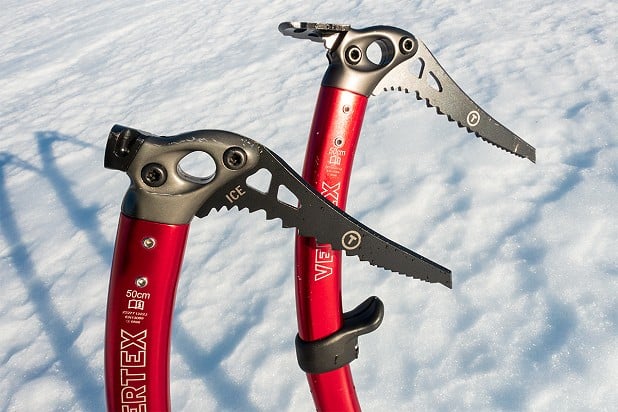
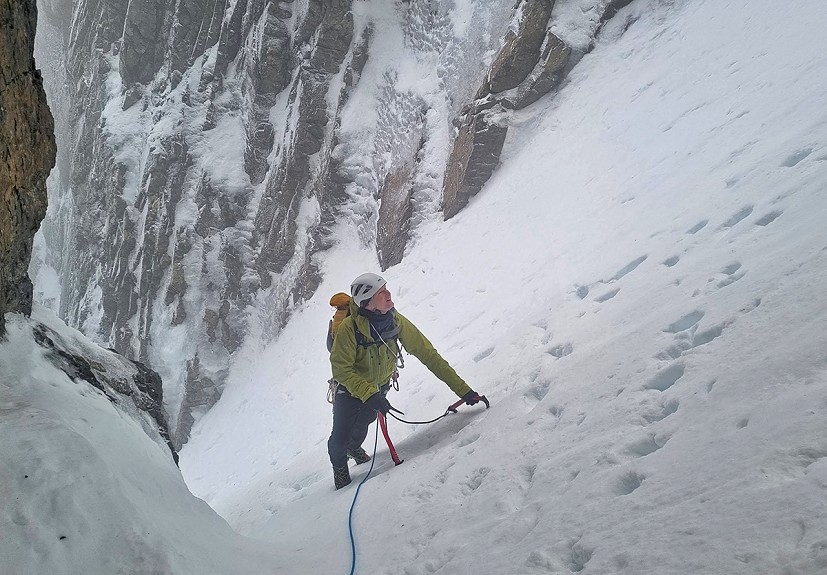
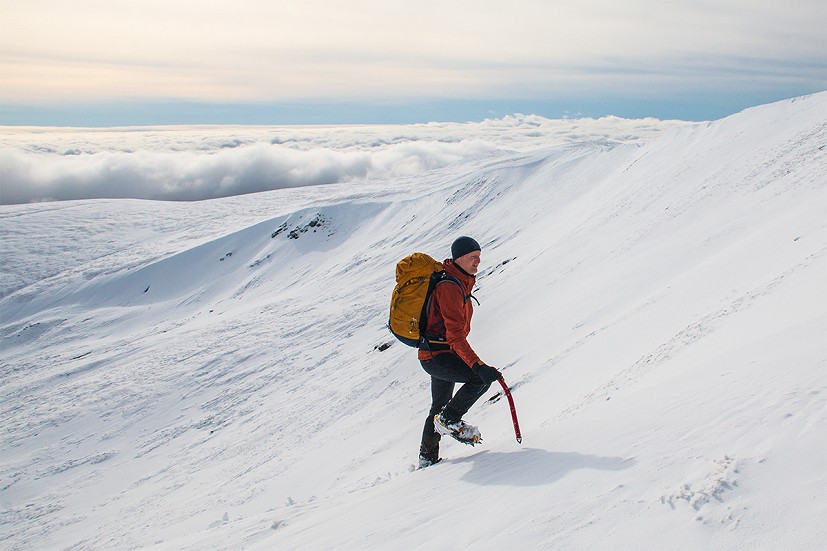
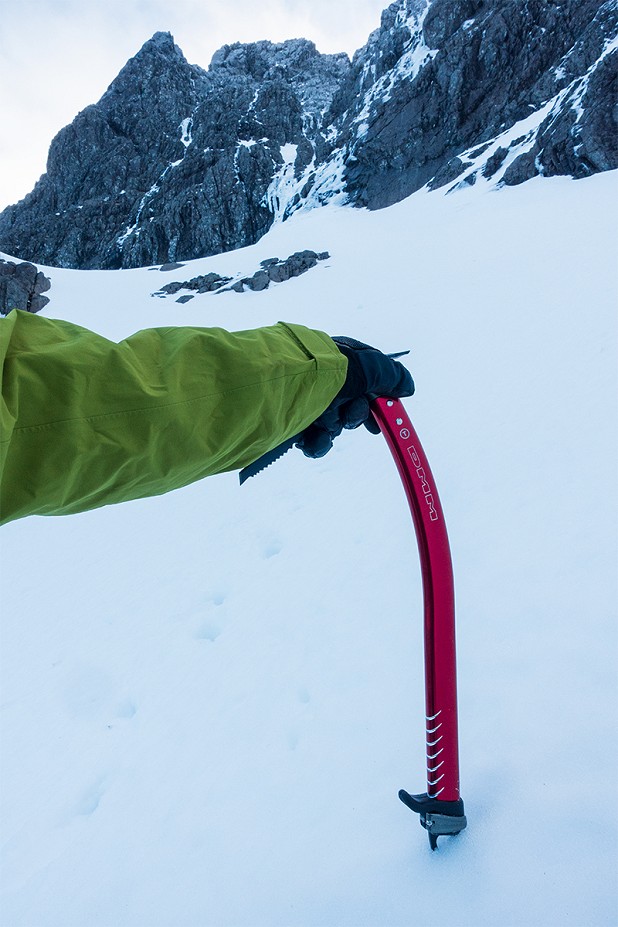
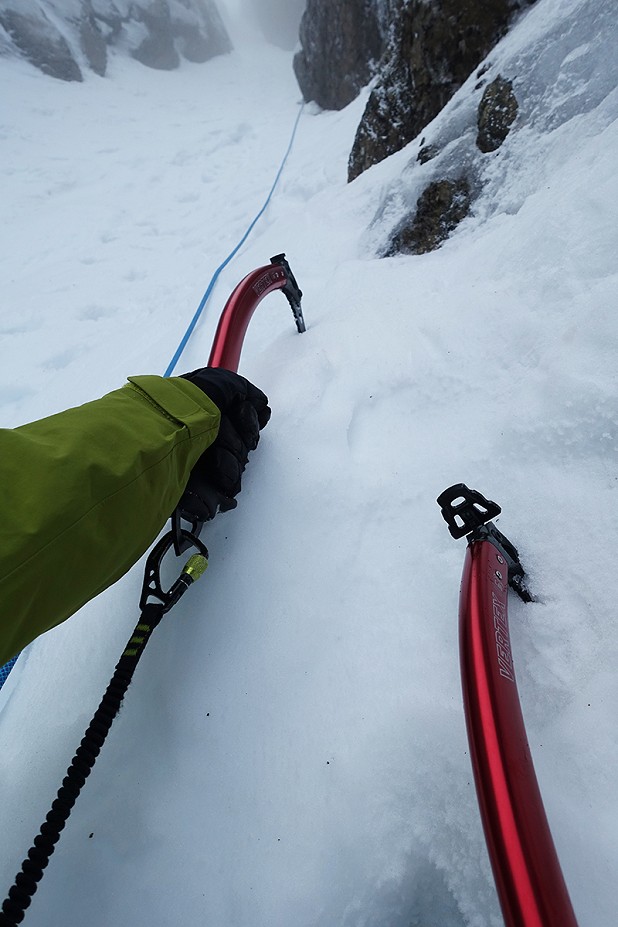

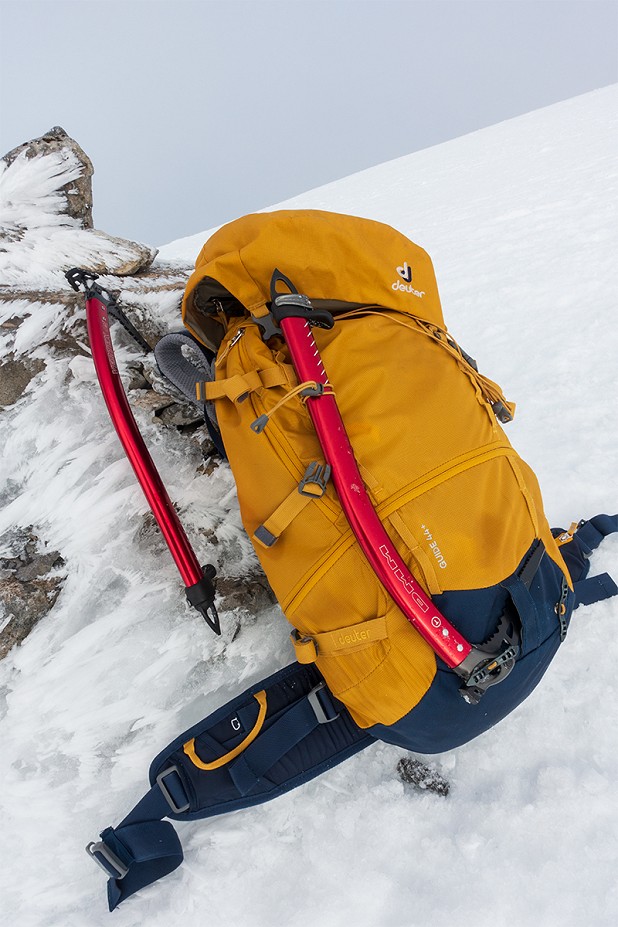

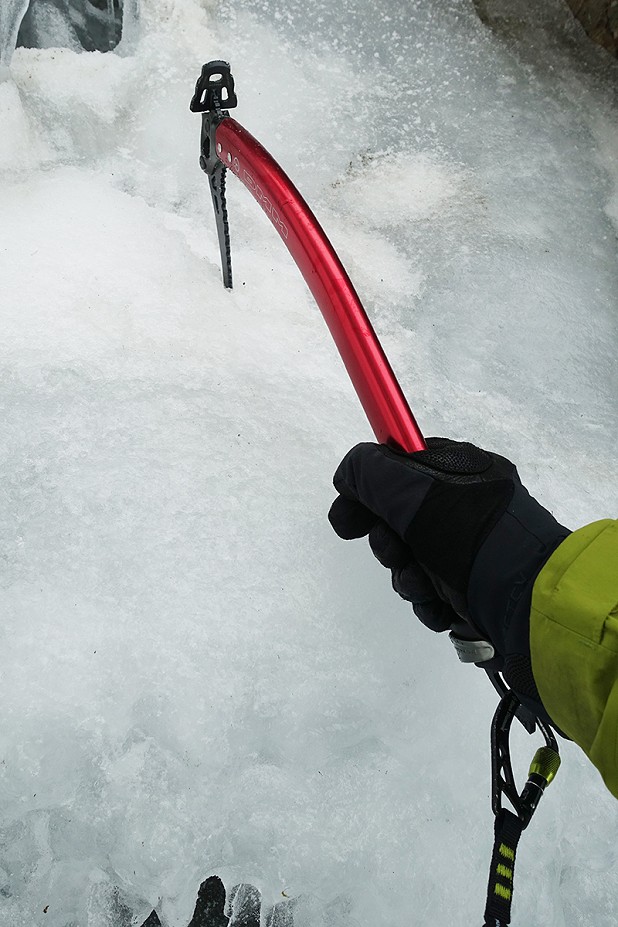
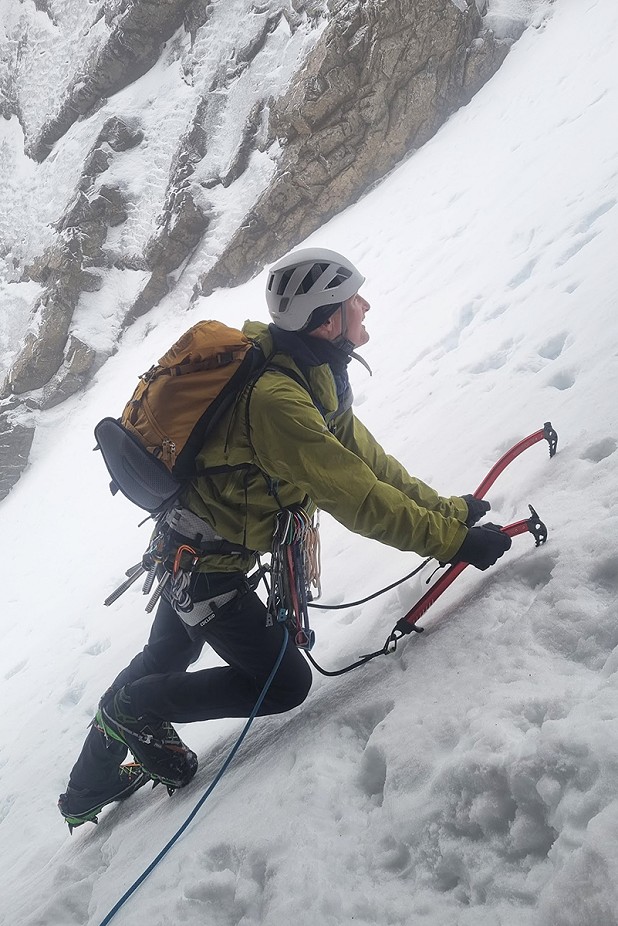
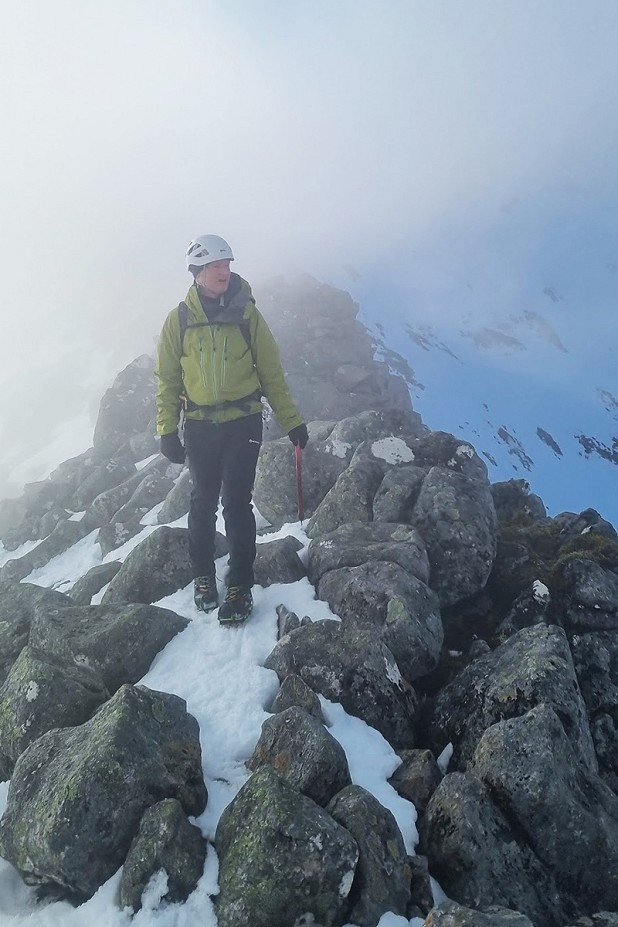
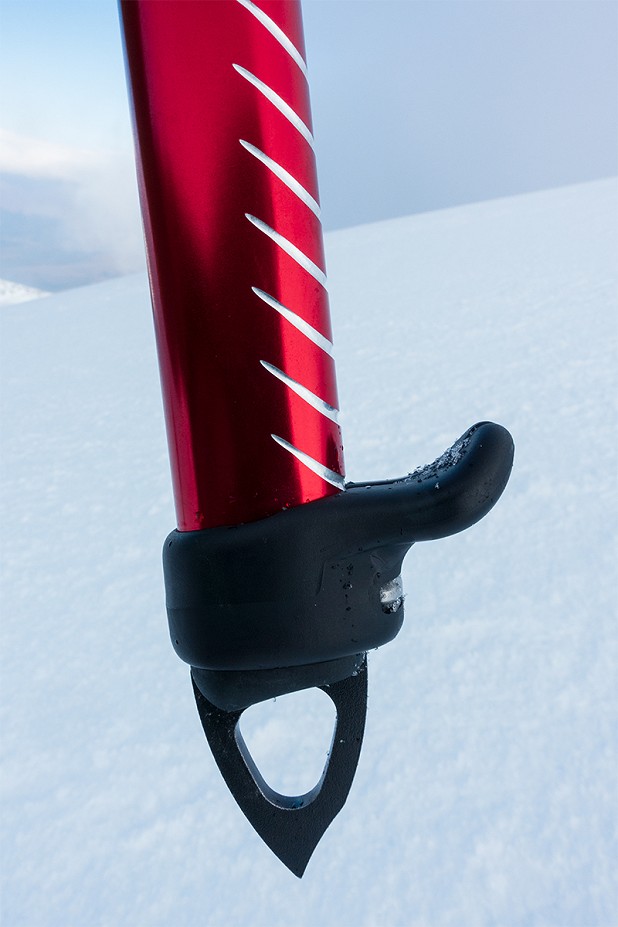
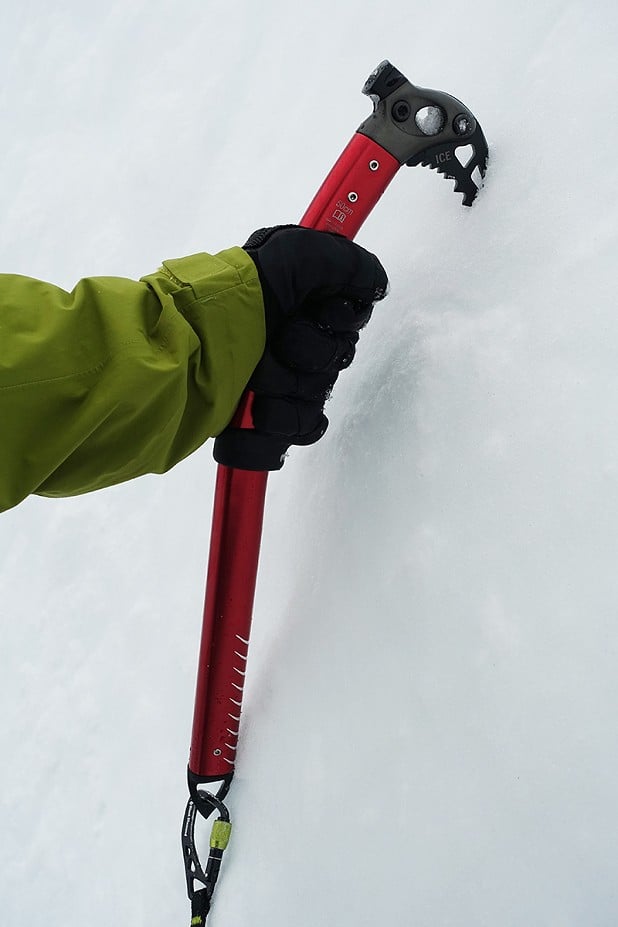


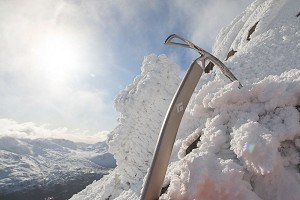
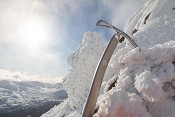


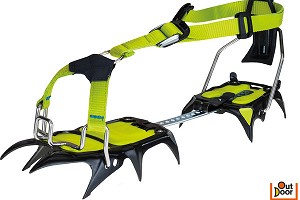
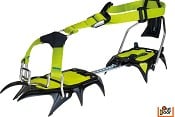
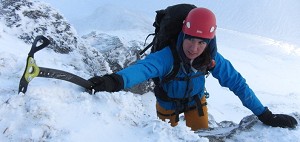

Comments
Nice review, thanks. Looks perfect for moderate-mid alpine where a second technical tool might be desirable for steeper sections - two of these would be like 900g instead of e.g. a Raptor and an Apex which is probably closing in on 1.3-1.4kg.
I've a question Dan - I know you have said you are happy with 2x 50cm. Any thoughts on taking an adze in 55cm and a hammer in 50cm? Thinking again about trips that might be predominantly single axe (so taking an adze at standard mountaineering length for someone around 180cm give or take), and then a shorter hammer for anticipated technical/two axe sections?
I did try and buy a pair a couple of months ago but was told they were delayed due to an issue with the triggers, I can see they have changed since the earlier images, they look a lot more substantial.
I would have like to buy DMM but alas I needed a pair for a trip and ended up with North Machine Carbons which are wonderful but a somewhat different beast (with a price tag to boot). Maybe these for the other half if I can convince her of the manifest joys of Scottish winter outings....
Thanks! I review a lot of stuff but it's still great when it's something I really love.
Can see the Vertex being a brilliant alpine tool. For moderate terrain a pair of them would seem like a better option than a mismatched Raptor/Apex, and a lot lighter as you say.
There'd be nothing stopping you getting a 55cm adze and a 50cm hammer. For one-axe ground the 55cm may be slightly better for folk of around our height (I'm just a bit taller), but I've been fine with 50cm so far. I do tend to prefer a shorter axe for everything: on easier angles a pole for support in one hand and the axe in the other; then when the slope steepens, a shorter axe in the uphill hand is fine.
Once you're using both I'd personally prefer to climb on an equal-length pair, and for that 50cm wins. But if you go 55-50, the length and weight difference isn't going to be great, and you'd at least have something with the same geometry in each hand.
I don't imagine there's a definitive answer on this, just some (mostly minor) pros and cons, and personal preference.
Awesome, thanks Dan. Yes that's the trade-off I'm thinking through... 55cm for walking is pretty much perfect for me and all things considered that would probably still be the primary mode of use in the Alps at my sort of punter level... there seems to be a growing scenario where 'steep snow/one axe/ slopes are now more like 'moderate angle ice and actually two tools might be more comfortable than not in certain circumstances'... Maudit shoulder, middle of the Rochefort, potentially the Forbes or Kuffner (although not been there). Stuff where you could/should/used to be able to get by with one axe but now might be more comfortable with two, but not worth carrying a spare full tech axe for...
Food for thought anyway.
You might want to consider the standard North Machine for the missus - they place nearly as well as the carbons and are only about 20 grammes heavier and a lot less dough. I was comfortably climbing WI4 with them while away in Italy earlier in the month.